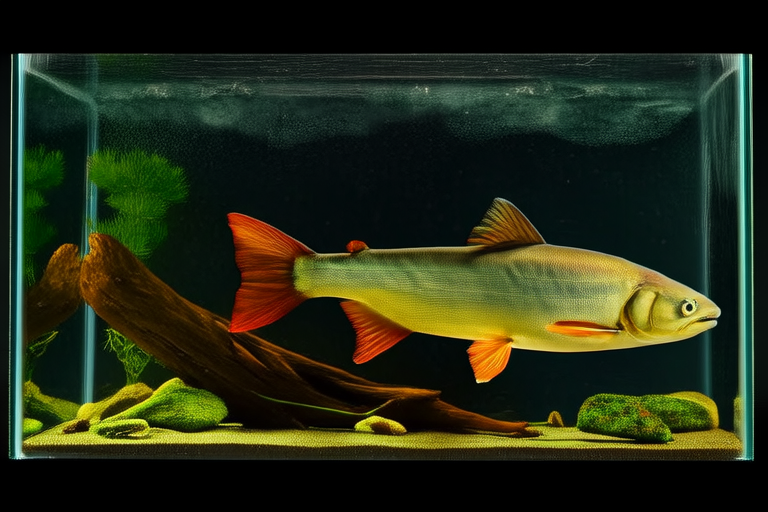The Arowana: From Mythical Legends to Modern Aquariums
The arowana, a majestic and enigmatic fish, has captivated human imagination for centuries. Revered in ancient legends across various cultures, this species is known for its distinctive physical attributes and intriguing behaviors. This article delves into the history and characteristics of arowana fish, exploring their significance in myths and beliefs, their physical features, habitat, and unique behaviors. It also discusses the challenges and considerations for keeping arowana as pets, their conservation status, and efforts to protect these species. Finally, it compares and contrasts their roles in traditional folklore versus contemporary aquarium trends.
Significance in Ancient Legends Across Different Cultures
Arowana fish hold significant cultural importance in many parts of the world. In Chinese mythology, they are believed to bring good fortune and prosperity. The arowana is often depicted as a symbol of wealth and success, and its presence in homes is thought to attract positive energy. Similarly, in Malaysian and Indonesian cultures, the arowana is considered a sacred fish and is believed to have the power to ward off evil spirits. These beliefs have contributed to the arowana’s popularity as an ornamental fish in Southeast Asia.
In addition to their cultural significance, arowana fish have also been featured in numerous legends and myths. One such story tells of a brave warrior who was transformed into an arowana after saving his village from a fierce storm. Another legend describes the arowana as a guardian of the seas, tasked with protecting the oceans’ treasures. These myths have helped to shape the arowana’s image as a powerful and revered creature.
Physical Attributes, Habitat, and Unique Behaviors
Arowana fish are easily recognizable by their long, sleek bodies and large, silvery scales. They possess a unique ability to leap out of the water to catch insects and small birds, which has earned them the nickname “dragon of the water.” Their strong, muscular bodies allow them to swim swiftly through the water, making them formidable predators in their natural habitat.
Native to tropical freshwater environments, arowana fish can be found in rivers, lakes, and swamps throughout Southeast Asia, Africa, and South America. They prefer warm, well-oxygenated waters with plenty of vegetation for cover. Due to their predatory nature, arowana fish require spacious tanks with ample swimming space and hiding spots. Providing a suitable environment for these fish is essential for their health and well-being.
Arowana fish exhibit several unique behaviors that make them captivating subjects in modern aquatics. One of their most notable traits is their ability to recognize and respond to their owners. Many arowana owners report that their fish will swim up to the tank’s surface when they approach, seemingly greeting them. Additionally, arowana fish are known for their intelligence and curiosity, often investigating new objects or changes in their environment.
Challenges and Considerations for Keeping Arowana as Pets
Despite their popularity as ornamental fish, keeping arowana as pets comes with several challenges and considerations. One of the primary concerns is providing adequate living conditions. Arowana fish require large tanks with ample swimming space and proper filtration systems to maintain water quality. Additionally, they need a varied diet consisting of live or frozen foods, such as feeder fish, shrimp, and worms.
Another challenge is the cost associated with keeping arowana fish. High-quality food, specialized equipment, and regular maintenance can add up quickly. Furthermore, arowana fish are expensive to purchase, with some species commanding prices in the thousands of dollars. Despite these challenges, many enthusiasts find the rewards of owning arowana fish well worth the investment.
It is important to note that keeping arowana fish as pets can have environmental implications. Overfishing and habitat destruction have led to declines in wild populations, prompting conservation efforts to protect these species. Responsible ownership practices, such as purchasing captive-bred fish and supporting sustainable breeding programs, can help mitigate these impacts.
Conservation Status and Efforts to Protect Arowana Species
The IUCN Red List classifies several arowana species as vulnerable or endangered due to overfishing and habitat loss. To address these threats, conservationists have implemented various strategies aimed at protecting arowana populations. One such initiative involves establishing protected areas where fishing is prohibited, allowing populations to recover naturally. Another approach focuses on promoting sustainable fishing practices and encouraging the development of aquaculture facilities for breeding and raising arowana fish in captivity.
Efforts to conserve arowana species also extend to public awareness campaigns designed to educate people about the importance of protecting these animals. By raising awareness about the threats facing arowana populations and the steps individuals can take to support conservation efforts, these campaigns aim to foster a greater appreciation for these remarkable creatures.
Comparison of Roles in Traditional Folklore Versus Contemporary Aquarium Trends
While arowana fish continue to play important roles in traditional folklore, their significance has evolved in recent years to include contemporary aquarium trends. In addition to their cultural and mythological importance, arowana fish have become popular among aquarium hobbyists for their striking appearance and unique behaviors.
The shift from traditional folklore to contemporary aquarium trends reflects changing attitudes toward these animals. While once revered primarily for their symbolic value, arowana fish are now appreciated for their aesthetic appeal and behavioral complexity. This transition underscores the enduring fascination humans have with these remarkable creatures and highlights the ongoing relevance of arowana fish in both cultural and recreational contexts.
Despite these differences, the core elements of arowana fish remain consistent across time and culture. Their majestic appearance, impressive abilities, and intriguing behaviors continue to captivate audiences, ensuring their place in both ancient legends and modern aquariums.
Conclusion
The arowana fish represents a fascinating blend of cultural heritage and modern aquatics. From their significance in ancient legends to their role in contemporary aquarium trends, these remarkable creatures have captured human imagination for centuries. Understanding the history, characteristics, and challenges associated with arowana fish provides valuable insights into their enduring appeal and the efforts being made to protect these species for future generations.
